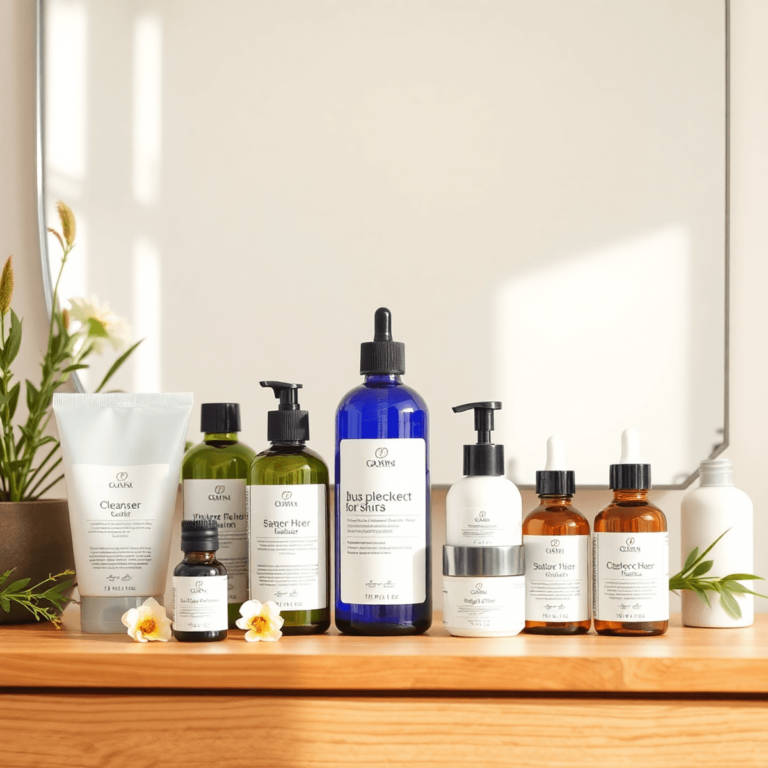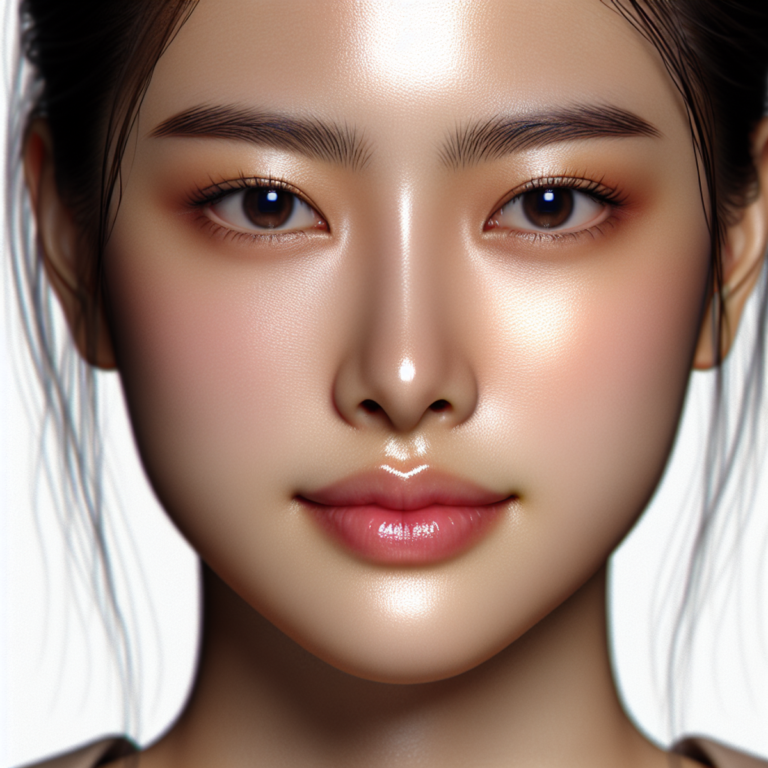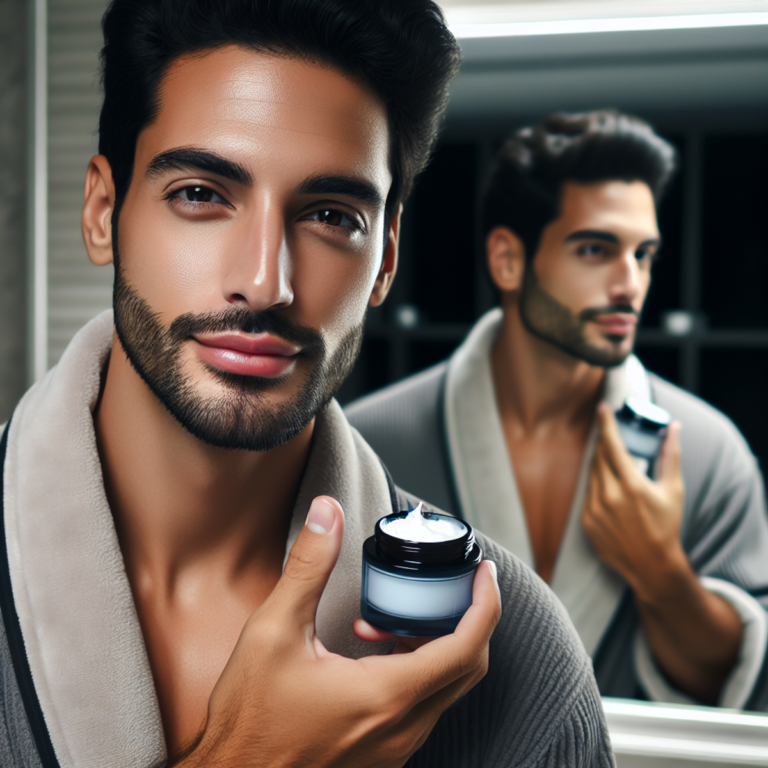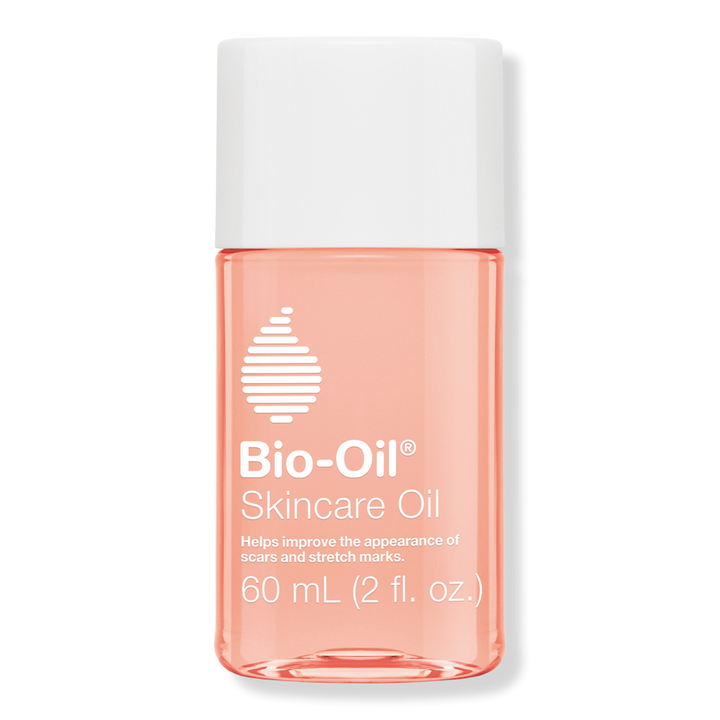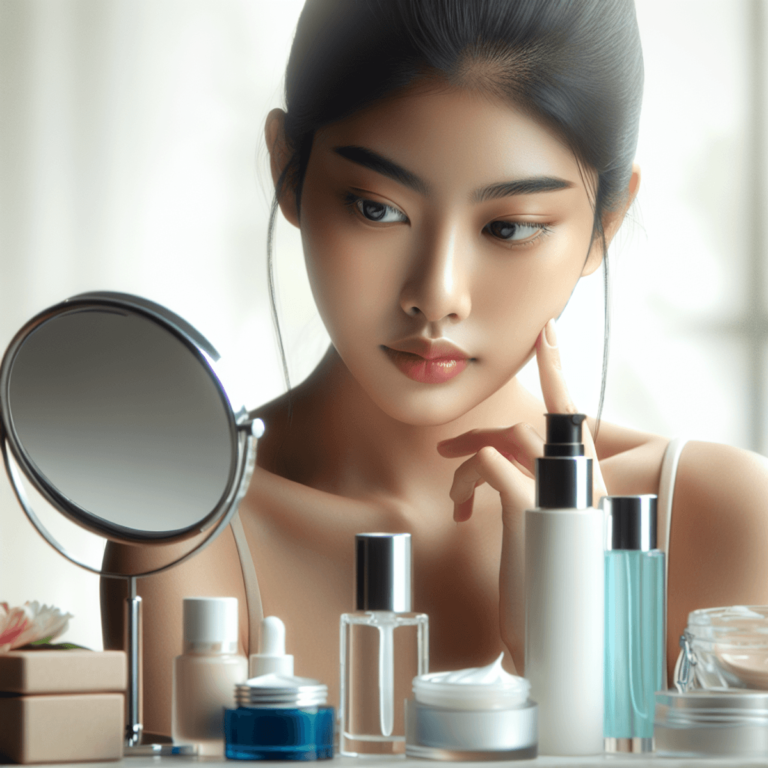Simple Ways to Get Rid of Acne Fast

Introduction
Acne is a common skin condition that affects individuals of all ages. Characterized by clogged pores, it can lead to various types of pimples, including blackheads and whiteheads. Understanding how to address acne promptly is crucial for both physical and emotional well-being. Rapid relief from breakouts not only improves skin appearance but can also boost self-confidence and reduce anxiety associated with visible blemishes.
In this article, you’ll discover simple and effective ways to get rid of acne fast. Specifically, we’ll cover:
- Quick-acting topical treatments
- Natural remedies that yield fast results
- Physical remedies you can try at home
- Skin care practices for immediate relief
- Behavioral tips to prevent future breakouts
With practical information and actionable insights, this guide aims to empower you in your battle against acne. Whether you’re dealing with an occasional pimple or persistent breakouts, effective strategies are available to help achieve clearer skin quickly.
Understanding Acne
Acne is a common skin condition characterized by clogged pores, blackheads, and whiteheads. To effectively treat acne, it’s important to understand its different types and underlying causes.
Types of Acne
Acne can be classified into two main categories:
- Inflammatory Acne: This type includes conditions like cystic acne and nodules, which are painful and swollen. Inflammatory acne occurs when bacteria infiltrate clogged pores, leading to redness and swelling.
- Non-inflammatory Acne: This includes blackheads and whiteheads, which are less severe forms of acne. Blackheads form when a pore is partially blocked with oil and dead skin; they appear dark due to oxidation. Whiteheads occur when the pore is completely blocked, trapping oil beneath the surface.
Causes of Acne
Several factors contribute to the development of acne:
- Hormonal Changes: Fluctuations in hormones during puberty, menstruation, or pregnancy can increase oil production in the skin.
- Excess Oil Production: Sebaceous glands may become overactive, leading to an abundance of sebum that clogs pores.
- Bacterial Overgrowth: The skin naturally hosts bacteria like Propionibacterium acnes. When pores are blocked, these bacteria can multiply, causing inflammation.
Role of Clogged Pores
Clogged pores play a significant role in forming different types of acne lesions. When dead skin cells mix with excess oil, they can block hair follicles. This blockage creates an environment conducive to bacterial growth. As bacteria thrive, inflammation occurs, leading to various acne forms.
Recognizing these aspects of acne helps you identify effective treatment methods tailored to your specific condition. Understanding both the causes and types allows for a more comprehensive approach to managing this common skin issue.
1. Quick-Acting Topical Treatments
Topical treatments are often the first line of defense against acne. Two of the most effective ingredients you can incorporate into your skincare routine are Benzoyl Peroxide and Salicylic Acid.
Benzoyl Peroxide
Benzoyl peroxide works primarily by targeting the bacteria responsible for acne, specifically Propionibacterium acnes. This ingredient penetrates the skin to reduce inflammation and clear clogged pores. When using benzoyl peroxide, consider the following:
- Concentration: Products typically range from 2.5% to 10%. Starting with a lower concentration can help your skin adjust while still providing effective results.
- Application: Apply it directly to affected areas once or twice daily. Overuse may lead to dryness or irritation, so it’s essential to monitor how your skin reacts.
Salicylic Acid
Salicylic acid is a beta hydroxy acid (BHA) known for its exfoliating properties. It helps remove dead skin cells and unclogs pores, making it particularly beneficial for those with oily or acne-prone skin. Key points include:
- Benefits: By penetrating deep into the pores, salicylic acid helps dissolve excess oil and reduces the formation of new acne lesions.
- Irritation Potential: While effective, some individuals may experience dryness or irritation. It’s advisable to start with products that contain a lower concentration (around 0.5% to 2%) and gradually increase as tolerated.
Both benzoyl peroxide and salicylic acid provide quick relief from breakouts when used correctly. They can be used separately or in combination for enhanced efficacy, depending on your skin’s sensitivity and needs.
2. Natural Remedies with Fast Results
Tea Tree Oil
Tea tree oil is a powerful natural remedy known for its antibacterial properties. It can effectively reduce acne breakouts due to the following reasons:
- Bacterial Targeting: The oil works by targeting the bacteria responsible for acne, helping to decrease inflammation and redness.
- Application Method: Dilute tea tree oil with a carrier oil, such as coconut or jojoba oil, before applying it directly to the affected areas. This reduces the risk of skin irritation.
- Patch Testing: Always conduct a patch test prior to full application. Apply a small amount on your wrist or behind your ear to ensure you do not have an allergic reaction.
When used consistently, tea tree oil can significantly improve the appearance of your skin while minimizing future breakouts.
Pimple Patches
Pimple patches are innovative adhesive stickers designed for overnight use. They offer several benefits:
- Oil Absorption: These patches contain hydrocolloid material that absorbs excess oil and pus from pimples. This helps reduce their size and promotes faster healing.
- Active Ingredients: Many pimple patches incorporate active ingredients like salicylic acid or tea tree oil, enhancing their effectiveness in treating acne.
- Ease of Use: Simply apply the patch onto clean, dry skin over the pimple before bed. You’ll wake up to visibly reduced swelling and redness.
These remedies provide practical solutions for those seeking quick relief from blemishes, making them essential tools in any skincare regimen focused on fast results.
3. Quick Physical Remedies You Can Try at Home
Ice Application
Ice application offers a straightforward and effective method for reducing inflammation and pain associated with active pimples. The cold temperature constricts blood vessels, leading to a decrease in swelling and redness. Here’s how to do it:
- Wrap ice cubes in a clean cloth or use a gel ice pack.
- Apply the wrapped ice directly to the pimple for about 5-10 minutes.
- Repeat as needed, ensuring you allow your skin to return to normal temperature between applications.
This method can significantly alleviate discomfort, making it an excellent choice when you’re looking for immediate relief from painful breakouts.
Cortisone Injections
Cortisone injections represent a professional treatment option that can provide rapid size and redness reduction for stubborn acne lesions. These injections deliver corticosteroids directly into the affected area, leading to quick results. Consider these points:
- Quick Effect: Patients often see a noticeable reduction in the size of the pimple within 24 hours.
- Professional Administration: It’s essential to visit a dermatologist for this treatment, as they will ensure proper dosage and technique.
- Not for Everyone: While cortisone injections are effective, they may not be suitable for all types of acne or all individuals. Discussing your options with a dermatologist is crucial.
Incorporating these physical remedies into your acne management routine can help you address breakouts swiftly. Utilizing ice application provides immediate comfort, while cortisone injections serve as a powerful tool for more severe cases. Both methods can complement other treatments you may be using, enhancing your overall approach to how to remove pimples naturally and permanently.
4. Skin Care Practices for Fast Relief from Acne Flare-Ups
Non-comedogenic Makeup
When dealing with acne-prone skin, choosing the right makeup products is crucial. Non-comedogenic makeup is specifically formulated to avoid clogging pores, which can exacerbate breakouts. Here are key points to consider:
- Ingredients Matter: Check for labels that indicate “non-comedogenic” to ensure the product won’t contribute to acne formation.
- Lightweight Formulas: Opt for foundations and concealers that are oil-free and have a lightweight texture. They provide coverage without suffocating your skin.
- Mineral Makeup Options: Consider mineral-based products which are often less irritating and can be beneficial for sensitive skin types.
Using non-comedogenic products can help maintain a clear complexion while allowing you to enjoy makeup.
Hydrocortisone Cream
Hydrocortisone cream serves as a quick remedy for inflamed areas on your skin. This topical corticosteroid works effectively but should be used with caution. Key guidelines include:
- Short-term Use Only: Limit application to a few days to prevent potential side effects like skin thinning or rebound inflammation.
- Spot Treatment Application: Apply a thin layer directly to inflamed areas. This localized approach helps reduce redness and swelling without affecting the surrounding skin.
- Consultation Recommended: Always consult with a healthcare provider before starting hydrocortisone treatment, especially if you have underlying skin conditions.
Incorporating these skincare practices into your routine can provide immediate relief from acne flare-ups while promoting healthier skin in the long term. Prioritizing non-comedogenic makeup ensures that your beauty regimen complements your skincare goals effectively.
5. Behavioral Tips to Prevent Pimple Formation in the First Place
Acne prevention starts with understanding behaviors that can make the condition worse. One of the most important habits to avoid is picking or popping pimples. This can lead to several negative consequences:
- Increased Risk of Scarring: Manipulating pimples can disrupt the skin’s natural healing process, leaving behind scars that may last long after the acne has cleared.
- Spreading Bacteria: Touching or squeezing pimples introduces bacteria from your hands into the affected area, potentially worsening the breakout.
Maintaining a consistent skincare routine is essential for acne management. Here are key components to include:
- Gentle Cleansing: Use a mild cleanser twice daily to remove excess oil and dirt without stripping away natural moisture. Avoid harsh scrubs that can irritate the skin.
- Moisturizing: Even oily skin requires hydration. Choose a non-comedogenic moisturizer that won’t clog pores while keeping your skin balanced.
Incorporating these practices into your daily regimen can significantly reduce the likelihood of breakouts. Adopting a proactive approach rather than reactive measures fosters healthier skin over time.
Additionally, consider implementing these behavioral tips:
- Avoid Touching Your Face: Frequent touching can transfer oils and bacteria from your hands to your face.
- Change Pillowcases Regularly: Dirt and oils accumulate on bedding. Clean pillowcases help minimize exposure to acne-triggering substances.
- Be Mindful of Hair Products: Hair gels or sprays can contribute to clogged pores along your hairline. Opt for products labeled non-comedogenic.
These simple yet effective strategies create an environment less conducive to acne formation, allowing your skincare efforts to shine through without interruption from new breakouts.
Long-Term Solutions for Effective Acne Management
Acne can persist despite your best efforts with at-home treatments. Understanding when to seek professional help is crucial for effective management. Persistent or severe cases of acne may require more than over-the-counter solutions. Here are indicators that it’s time for a dermatologist consultation:
- Persistent Breakouts: If you experience frequent acne flare-ups that do not respond to topical treatments after several weeks, this may indicate a need for professional evaluation.
- Severe Inflammation: Painful cystic acne or deep nodules often require specialized treatment to prevent scarring and long-term skin damage.
- Scarring: If your breakouts lead to noticeable scarring, it is essential to consult a dermatologist who can recommend appropriate interventions.
- Skin Changes: Unexplained changes in your skin, such as new types of lesions or widespread redness, should be assessed by a professional.
Once you’ve determined the need for professional help, you will benefit from personalized treatment options tailored to your specific skin type and concerns. Dermatologists employ various strategies to address acne effectively:
- Topical Treatments: Prescription-strength formulations may include higher concentrations of benzoyl peroxide or retinoids that provide faster, more effective results compared to over-the-counter products.
- Oral Medications: In cases of severe acne, dermatologists might prescribe antibiotics or hormonal therapies like oral contraceptives for women, targeting underlying hormonal factors contributing to breakouts.
- Chemical Peels: These treatments involve applying a chemical solution to exfoliate the skin deeply, helping clear clogged pores and reduce inflammation.
- Laser and Light Therapy: Advanced technologies can effectively target bacteria causing acne while reducing redness and promoting healing.
- Isotretinoin: In extreme cases, this powerful medication may be recommended for those who have not responded to other treatments, addressing both active lesions and preventing future breakouts.
- Customized Skincare Regimens: A dermatologist will evaluate your skin type—whether it’s oily, dry, or combination—to create a tailored skincare routine that includes suitable products for daily care.
Personalized treatment is key in managing acne effectively over the long term. By understanding the unique needs of your skin and collaborating with a dermatologist, you can achieve clearer skin and minimize the risk of future breakouts. Prioritize communication with your healthcare provider regarding any concerns or changes in your skin condition; this proactive approach ensures optimal management tailored specifically for you.
Conclusion
Understanding effective strategies for fast relief from acne outbreaks is empowering. Knowledge about how to get rid of pimples quickly can greatly enhance both your physical and emotional well-being. Here are key points to remember:
- Fast Relief Options: Utilize treatments like benzoyl peroxide and salicylic acid to achieve quick results.
- Natural Remedies: Consider tea tree oil and pimple patches as gentle alternatives.
- Professional Help: Recognize when it’s time to consult a dermatologist for persistent issues.
Taking care of your skin involves not only immediate solutions but also long-term practices. Maintaining a consistent skincare routine with gentle cleansing, non-comedogenic makeup, and the occasional use of hydrocortisone cream will support your skin health over time.
When you know how do you get rid of pimples, you can act decisively during flare-ups. Whether you’re wondering how to get rid of pimples overnight or seeking strategies for everyday management, the right approach can make all the difference. By prioritizing your skin’s needs today, you invest in a healthier complexion for tomorrow. Take control of your skin journey with these Simple Ways to Get Rid of Acne Fast.
FAQs (Frequently Asked Questions)
What is acne and why is it important to address it quickly?
Acne is a common skin condition that affects many individuals, characterized by various types of lesions such as pimples, blackheads, and whiteheads. Addressing acne quickly is important for both physical comfort and emotional well-being, as persistent breakouts can lead to self-esteem issues.
What are some quick-acting topical treatments for acne?
Two effective quick-acting topical treatments are Benzoyl Peroxide and Salicylic Acid. Benzoyl Peroxide works by killing bacteria and reducing inflammation, with recommended concentrations ranging from 2.5% to 10%. Salicylic Acid helps exfoliate dead skin cells and unclog pores, though it may cause irritation in some users.
Are there natural remedies that provide fast results for acne?
Yes, natural remedies such as Tea Tree Oil and pimple patches can provide fast relief. Tea Tree Oil has antibacterial properties that help reduce breakouts quickly; however, it’s advisable to conduct a patch test for allergies. Pimple patches work overnight by absorbing excess oil and promoting healing.
What home remedies can I try for immediate relief from pimples?
Ice application is a simple method to reduce inflammation and pain associated with active pimples. Additionally, cortisone injections administered by a professional can rapidly decrease the size and redness of severe breakouts.
How can I prevent pimple formation in the first place?
To prevent pimple formation, avoid picking or popping pimples, as this increases the risk of scarring and spreading bacteria. Maintaining a consistent skincare routine with gentle cleansing and moisturizing is also crucial in preventing breakouts.
When should I seek professional help for my acne?
You should consult a dermatologist when you experience persistent or severe cases of acne that do not respond to over-the-counter treatments. A dermatologist can provide personalized treatment options based on your individual skin type and concerns.


